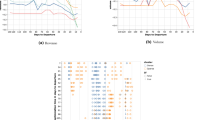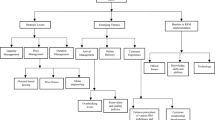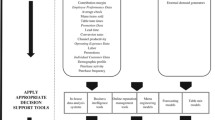Abstract
Revenue management (RM) can be considered an application of operations research in the transportation industry. For these service companies, it is a difficult task to adjust supply and demand. In order to maximize revenue, RM systems display demand behavior by using historical data. Usually, parametric methods are applied to estimate the probability of choosing a product at a given time. However, parameter estimation becomes challenging when we need to deal with constrained data. In this research, we evaluate the performance of a revenue management system when a non-parametric method for choice probability estimation is chosen. The outcomes of this method have been compared to the total expected revenue using synthetic data.


Similar content being viewed by others
References
Bront J, Méndez-Díaz I, Vulcano G (2009) A column generation algorithm for choice-based network revenue management. Oper Res 57(3):769–784
Chaneton JM, Vulcano G (2011) Computing bid prices for revenue management under customer choice behavior. Manuf Serv Oper Manag 13(4):452–470
Cooper W, Homem-de Mello T, Kleywegt A (2006) Models of the spiral-down effect in revenue management. Oper Res 54(5):968–987
Gallego G, Iyengar G, Phillips R, Dubey A (2004) Managing flexible products on a network. Working paper, Columbia University, New York
Kunnumkal S, Topaloglu H (2008) A refined deterministic linear program for the network revenue management problem with customer choice behavior. Nav Res Logist (NRL) 55(6):563–580
Liu Q, van Ryzin G (2008) On the choice-based linear programming model for network revenue management. Manuf Serv Oper Manag 10(2):288–310
McFadden D (2001) Disaggregate behavioral travel demand’s RUM side. In: Travel behaviour research. Pergamon Press, Oxford
Simpson RW (1989) Using network flow techniques to find shadow prices for market and seat inventory control. In: Proceedings of technical report memorandum, M89–1, Flight Transportation Laboratory, MIT, Cambridge
Talluri K, van Ryzin G (2004) Revenue management under a general discrete choice model of consumer behavior. Manag Sci 50(1):15–33
Train K (2009) Discrete choice methods with simulation, 2nd edn. Cambridge university press, Cambridge
van Ryzin G (2005) Future of revenue management: models of demand. J Revenue Pricing Manag 4(2):204–210
Weatherford L (2000) Unconstraining methods. In: AGIFORS Reservations and Yield Management Study Group
Author information
Authors and Affiliations
Corresponding author
Rights and permissions
About this article
Cite this article
Azadeh, S.S., Hosseinalifam, M. & Savard, G. The impact of customer behavior models on revenue management systems. Comput Manag Sci 12, 99–109 (2015). https://doi.org/10.1007/s10287-014-0204-z
Received:
Accepted:
Published:
Issue Date:
DOI: https://doi.org/10.1007/s10287-014-0204-z




